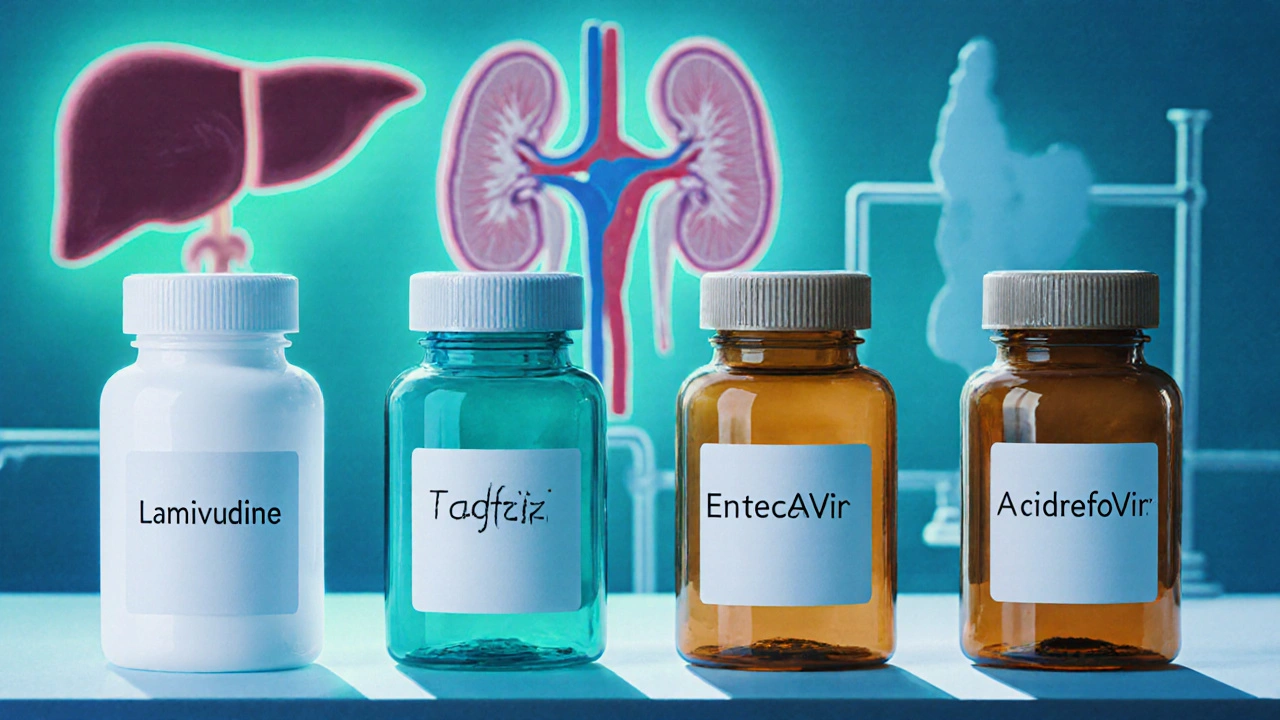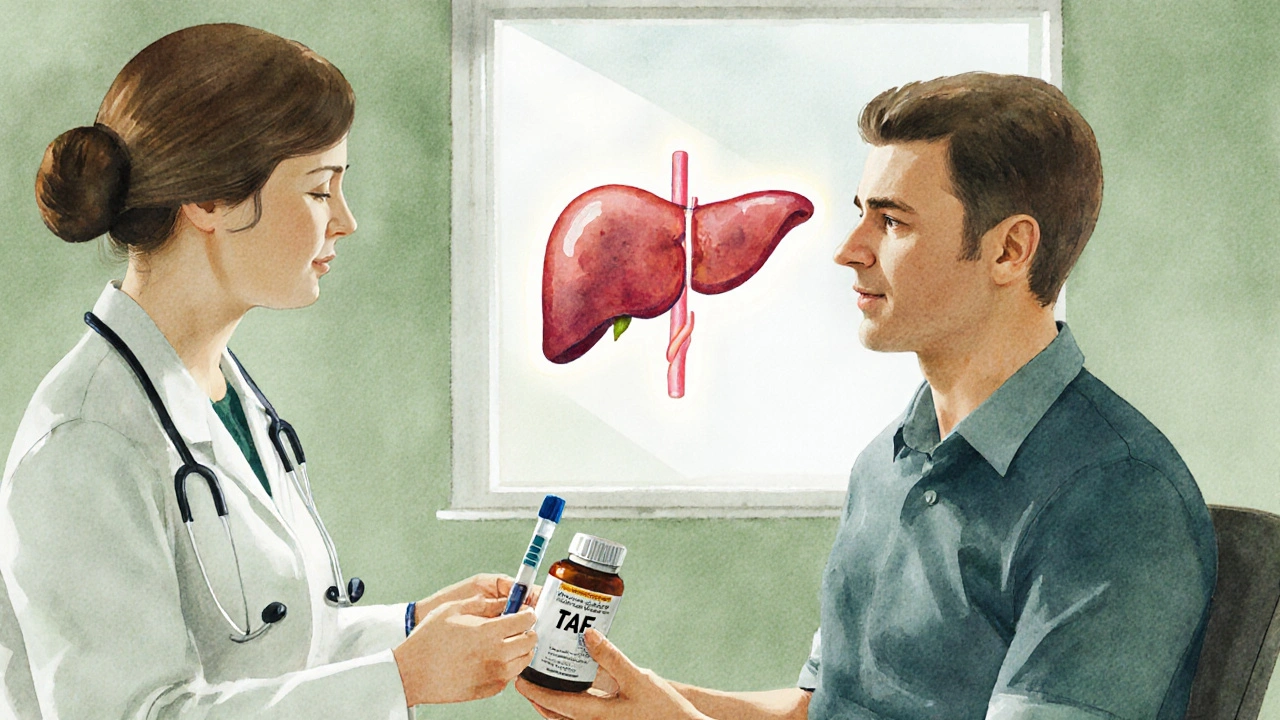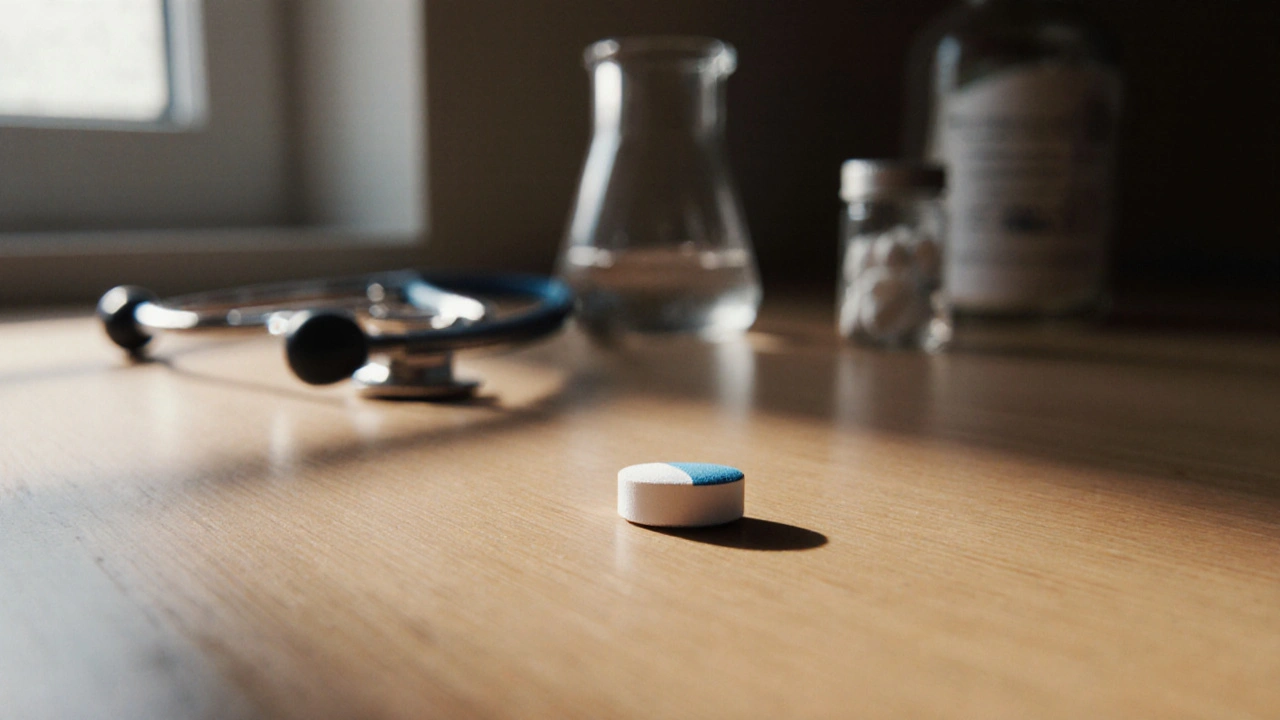Hepatitis B Treatment Calculator
Treatment Selection Guide
Choose the most appropriate hepatitis B antiviral based on your specific health profile. This tool helps you compare options based on efficacy, resistance risk, kidney impact, and cost.
Your Health Profile
Treatment Recommendation
Comparison Overview
| Drug | Potency | Resistance Risk | Renal Impact | Cost |
|---|---|---|---|---|
| Lamivudine | ≈2-log reduction | 20-30% (5 yr) | None to minimal | £5/month |
| Tenofovir (TDF) | ≥5-log reduction | Low | Some impact | £12/month |
| Tenofovir (TAF) | ≥5-log reduction | Low | Minimal impact | £15/month |
| Entecavir | ≥5-log reduction | Low | Very low impact | £10/month |
Quick Takeaways
- Lamivudine is cheap and well‑tolerated but develops resistance in about 20‑30% of patients after 5years.
- Tenofovir (both TDF and TAF) offers the highest barrier to resistance and excellent viral suppression.
- Entecavir matches Tenofovir’s potency with fewer kidney concerns, but still costs more than Lamivudine.
- Choosing a therapy depends on viral load, liver disease stage, kidney function, pregnancy plans, and budget.
- All approved drugs require regular monitoring of liver enzymes, renal function, and HBV DNA.
What is Lamivudine (EpivirHBV)?
Lamivudine is a nucleoside analogue marketed for chronic hepatitis B infection under the brand name EpivirHBV. It was first approved in the United Kingdom in 1998 and belongs to the class of reverse‑transcriptase inhibitors that block viral DNA synthesis. The drug is taken orally, usually 100mg once daily, and is available as a generic, making it one of the most affordable options on the market.
How Lamivudine Works
Lamivudine mimics the natural nucleoside cytidine. Once inside liver cells, viral and host enzymes phosphorylate it to the active triphosphate form. This active molecule competes with the natural substrate of the hepatitis B virus (HBV) polymerase, causing premature chain termination during viral DNA replication. By reducing the amount of circulating HBV DNA, liver inflammation subsides and the risk of cirrhosis or liver cancer drops.
Key Benefits and Limitations
- Affordability: Generic lamivudine costs around £4-£6 per month in the UK.
- Excellent safety profile - most side‑effects are mild (headache, nausea).
- Simple dosing - once‑daily tablet.
- Resistance risk: The virus can acquire the rtM204V/I mutation, leading to virologic breakthrough in 20‑30% of patients after five years.
- Less potent viral suppression compared to newer agents; some clinicians reserve it for patients with low baseline HBV DNA.

Alternative First‑Line HBV Antivirals
Guidelines from the World Health Organization (WHO) recommend tenofovir and entecavir as preferred first‑line agents because of their high barrier to resistance. Below is a snapshot of the main alternatives available in the UK as of 2025.
- Tenofovir disoproxil fumarate (TDF) - a nucleotide analogue administered 300mg once daily.
- Tenofovir alafenamide (TAF) - a newer pro‑drug of tenofovir given 25mg once daily, with less impact on kidneys and bone.
- Entecavir - a guanosine analogue taken 0.5mg (or 1mg for treatment‑experienced patients) once daily.
- Adefovir dipivoxil - an older nucleotide analogue, 10mg once daily, now rarely used due to renal toxicity.
Side‑Effect Profiles
All HBV antivirals share a good overall safety record, but each has nuances.
- Lamivudine: Rare lactic acidosis, mild GI upset.
- TDF: Potential to lower eGFR and cause phosphate wasting; monitor renal function every 6months.
- TAF: Minimal renal impact, but can raise lipid levels slightly.
- Entecavir: Very low renal toxicity; occasional headache or fatigue.
- Adefovir: Notable nephrotoxicity; rarely used now.
Comparative Table
| Drug | Potency (HBV DNA log‑reduction) | Resistance Rate (5yr) | Renal Impact | Typical Cost (UK, per month) |
|---|---|---|---|---|
| Lamivudine | ≈2‑log reduction | 20‑30% | None to minimal | £5 |
| TDF | ≥5‑log reduction | <1% | Potential ↓eGFR, monitor | £30‑£35 |
| TAF | ≥5‑log reduction | <1% | Kidney‑friendly, slight ↑lipids | £45‑£50 |
| Entecavir | ≈5‑log reduction | ≈1% (naïve), higher if resistant | Very low renal effect | £40‑£45 |
| Adefovir | ≈2‑log reduction | ≈30% | Significant nephrotoxicity | £20 |

How to Choose the Right Agent
Decision‑making hinges on three core questions:
- What is the patient’s baseline viral load and liver disease stage?
- Are there any kidney issues, pregnancy plans, or cost constraints?
- Is there a likelihood of prior exposure to antiviral therapy that could have induced resistance?
For a newly diagnosed patient with low HBV DNA (<20,000IU/mL), normal kidney function, and limited finances, lamivudine can be a reasonable starter, provided the clinician schedules HBV DNA checks every 6‑12months to catch early resistance.
When the viral load exceeds 106IU/mL, or when the patient has chronic kidney disease (eGFR<60mL/min), tenofovir alafenamide or entecavir become the safer, more potent options.
Pregnant women, especially in the third trimester, often receive tenofovir (TDF) because of extensive safety data across the placenta.
Monitoring & Follow‑Up
All HBV antivirals require a baseline assessment:
- HBV DNA (quantitative PCR)
- ALT and AST (liver enzymes)
- eGFR and serum phosphate (renal panel)
- HBsAg quantitative (optional, to gauge functional cure)
After initiating therapy, repeat HBV DNA and ALT at 12weeks, then every 6months. Renal function should be checked every 6months for tenofovir or adefovir, and annually for lamivudine and entecavir.
If HBV DNA rises by >1log from nadir or ALT spikes, assess adherence first; if drug‑resistance is suspected, switch to a higher‑barrier agent (e.g., TAF or entecavir).
Real‑World Example
John, a 48‑year‑old accountant from Manchester, was diagnosed with chronic HBV during a routine check. His baseline HBV DNA was 8×105IU/mL, ALT 85U/L, and eGFR 78mL/min. He was worried about medication costs. His clinician started lamivudine, explaining the need for 6‑monthly HBV DNA tests. After 18months, his HBV DNA fell to 1×103IU/mL, but a rebound to 5×104IU/mL was seen at the 24‑month mark, confirming resistance. The doctor switched him to tenofovir alafenamide, and his viral load became undetectable within three months, with no renal issues.
This case illustrates why low‑cost options work for some patients but must be paired with vigilant monitoring.
Frequently Asked Questions
Can I use lamivudine during pregnancy?
Lamivudine is classified as Category B by the UK MHRA, meaning animal studies show no risk but there are limited human data. It is generally considered safe, but tenofovir (TDF) is preferred because of larger safety registries.
How long do I need to stay on lamivudine?
Current guidelines recommend indefinite therapy for chronic HBV unless a sustained undetectable HBV DNA and HBsAg loss are achieved, which is rare with lamivudine alone. Stopping early can cause viral rebound.
Is resistance to lamivudine reversible?
The resistance mutations (rtM204V/I) can persist for years. Switching to a high‑barrier drug (e.g., tenofovir) suppresses the virus despite the mutation, but the mutation itself doesn’t disappear.
Do I need to get my kidneys checked while on lamivudine?
Lamivudine has minimal renal toxicity, so routine kidney tests are optional unless you have pre‑existing kidney disease or are taking other nephrotoxic drugs.
Which drug offers the best chance of a functional cure?
No current antiviral guarantees a functional cure (HBsAg loss). However, tenofovir and entecavir have the highest rates of long‑term suppression, providing the best backdrop for emerging cure strategies.

Greg DiMedio
October 14, 2025 AT 22:47Wow, cheapest drug ever, why not just flush the virus out with a penny?
Badal Patel
October 24, 2025 AT 05:00Whilst the author extols lamivudine’s affordability, one must recognise that such economic thrift does not absolve the clinician of the inevitable spectre of resistance; indeed, the very premise of cost‑efficacy is rendered moot when virologic breakthrough looms large: it is, therefore, imperative to weigh the fiscal allure against the long‑term therapeutic jeopardy.
Kara Guilbert
November 2, 2025 AT 11:13People should think twice before picking a drug just 'cause it’s cheap; cheap medicines often hide hidden dangers, and we owe it to ourselves to demand the best care even if it costs a bit more.
James Lee
November 11, 2025 AT 17:27Lamivudine, that humble little pill, masquerades as the darling of budget‑concious patients.
Yet beneath its unassuming price tag lies a saga of viral rebellion that most clinicians prefer to ignore.
The drug’s modest potency, roughly a two‑log reduction, is akin to a whisper in a hurricane of HBV replication.
When the virus mutates, it does so with a casual disdain for our therapeutic optimism.
Resistance rates hovering between twenty and thirty percent after five years are not mere statistics; they are a warning bell.
One could argue that prescribing lamivudine is an exercise in fiscal responsibility, but at what ethical cost?
Medical practice is not a marketplace where the cheapest item always wins the bid.
Consider the alternative agents-tenofovir and entecavir-each brandishing a higher barrier to resistance and deeper viral suppression.
Their modestly higher price tags reflect the research, development, and safety data that underpin them.
In a world where chronic hepatitis B can culminate in cirrhosis or hepatocellular carcinoma, we must ask whether short‑term savings outweigh long‑term morbidity.
The notion of “affordable” becomes a hollow mantra if patients must later endure additional treatment courses.
Moreover, the renal neutrality of lamivudine, while attractive, does not compensate for its limited efficacy in high‑viral‑load scenarios.
A nuanced approach, integrating patient‑specific factors such as kidney function, viral load, and pregnancy status, is essential.
Thus, the decision matrix should be driven by clinical evidence rather than the allure of a £5‑per‑month label.
In the end, we as prescribers are custodians of both health and hope, and we ought to choose tools that honor that dual mandate.
Dennis Scholing
November 20, 2025 AT 23:40When choosing an antiviral, start by assessing the patient’s renal function and viral load; for most patients with normal kidneys and high viral load, tenofovir (TAF) offers strong suppression with minimal renal impact, while entecavir is a solid alternative for those who prefer a guanosine analogue. Cost considerations can then be layered on, but remember that lower price does not always translate to better outcomes.
Kasey Lauren
November 30, 2025 AT 05:53It’s great that there are cheap options like lamivudine, but if you can afford a little more, the newer drugs usually keep the virus down better and keep your kidneys happy.